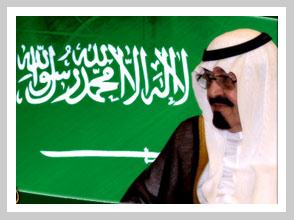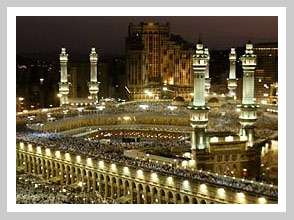About Kingdom

Saudi Arabia was an economically underdeveloped country until the early 20th century. The country had a poor economic landscape, dominated by barren deserts, camel caravans, isolated date palms and Bedouin life-style. The exceptions, of course, existed for few coastal areas such as Jeddah on the west-coast, because of continual inflow of pilgrims for the purpose of visiting Makkah and Madina; and Qatif, Jubail and Al-Hasa on the east-coast, due to long-time fishing, pearling and date-farming traditions.
Modern history of Saudi Arabia began in 1930s with the discovery of oil. Over a relatively short-span of time the Saudi economy has made rapid progress. From being a poor country with limited resources, it emerged as a leading economic power in the Middle East. From almost negligible GDP in the early 20th century, Saudi Arabia’s real per capita GDP (in terms of purchasing power parity) reached a record high of $20.7 thousand in 2007 that ranks the country as an upper-middle income nation. One should note that if it was not because of high population growth (3.4% per annum), the country could have reached at high-income level category by now, just like its neighboring Gulf countries, namely Kuwait, Qatar, Bahrain, and UAE. While the real GDP grows at 4.9%, population grows at nearly 3.4%. This implies that real per capita GDP increases only at 1.5% per annum which, in turn, means that it will take nearly 50 years till real per capita GDP to be doubled.
The Eastern Province has served as the engine of economic development of Modern Saudi Arabia. King Abdulaziz Ibn Saud, the great visionary, foresaw the great scope for oil in Saudi Arabia in the early 20th century and decided to invite western oil companies to explore it. Oil exploration began in due course in Dhahran area. Initial efforts were slow and uncertain, but eventually in 1936, Dammam Well No. 7 proved the existence of commercially viable oil. It was, however, not until the end of World War II that true economic impact of oil on domestic economy was fully gauged. By 1945, production capacity reached, for the first time, at level of 2 million barrels per day. Ras Tanura on the eastern coast soon became the beehive of oil activity, with setting up of Saudi Arabia’s first oil refinery, tank farm, and marine terminal.
Since that time, Eastern Province’s oil and gas resources have been attracting vigorous flow of investments to Saudi Arabia. The government’s decision to launch Five-Year Development Plans, from 1970s, also marked the beginning of an organized and mindful development process in Saudi Arabia. It was also seen as the recognition of the fact that Saudi economy should look beyond an economy that is one-dimensionally dependent on oil.
In this respect, Saudi Arabia is pursuing the following two principal goals: (i) Economic diversification through the development of industry, agriculture, mining, and other non-oil sectors to decrease the country’s dependence on oil; (ii) Encouraging the private sector to play a major role in the Kingdom’s economic development under free market rules and Islamic frameworks. This development process – though consistent with the principles of economic planning – has its roots in socioeconomic traditions of the country, particularly Islamic values. Accordingly, the government has opted for a liberal free market economy, functioning within the framework of Islamic values. This economic strategy has worked well for Saudi Arabia’s development through the last eight Five-Year plans.
Considering the latest available statistics (i.e., 2007), with more than $215 billion exports and $82 billion imports, Saudi economy enjoys a significant level of trade surplus that makes the country a good candidate for being an international lender. The rate of gross capital formation is nearly 19% of the country’s real GDP which promises a steady economic growth in mid- to long-term. The Saudi government is well aware of fundamental roles of a dynamic and consistent flow of investments needed for its economic development plans. Saudi government consistently encourages both foreign and domestic investors with a business environment that meets high standards in terms of freedom, transparency, stability, and security.

Eastern Province has attracted a large amount of foreign capital and technology, thanks to world-class infrastructure (transport, telecommunication, utilities, and water), availability of abundant raw materials and other favorable factors like advanced banking and financial institutions. The government’s liberal economic policies and incentives for private sector have further encouraged more investments in the province.
The province has thrived under these conditions, with its living standards currently comparable to those in the industrially developed countries. The market is flourishing with automobiles, modern household appliances, entertainment industry products and IT hardware and software. Healthcare, education, and luxury hotels too are of top international standards. The scope for further economic development in the province is indeed bright, especially with joint ventures and foreign direct investments. Industries and services alike provide new vistas of opportunities for further investments.
